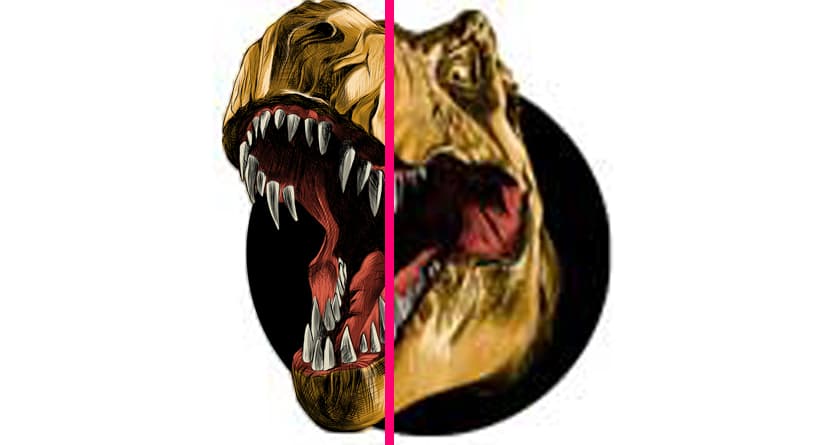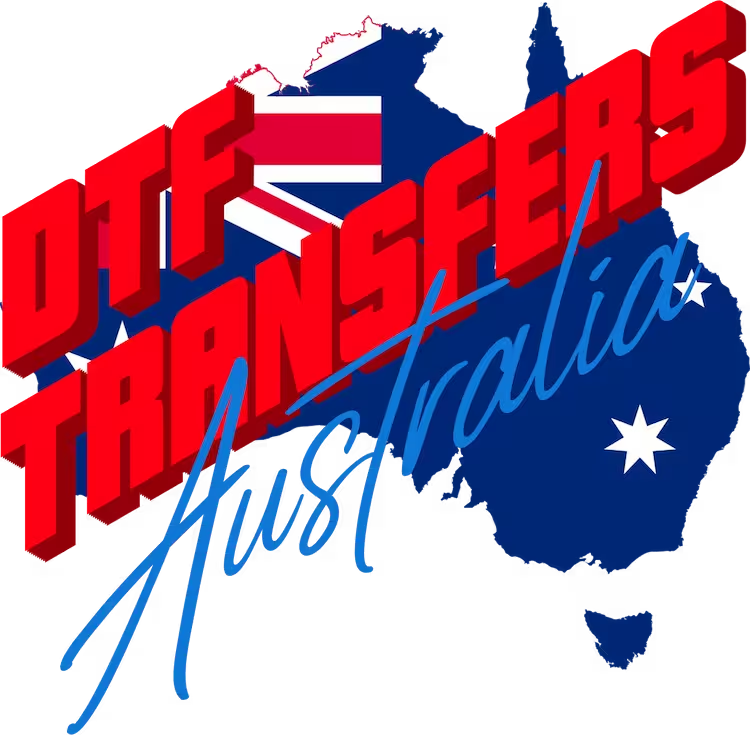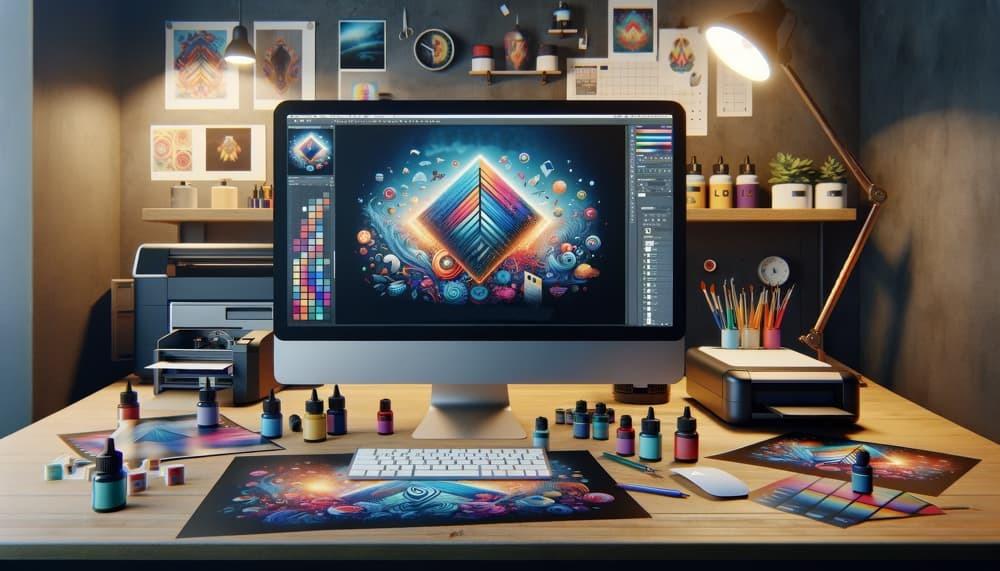Helpful Info, Websites
AI Upscaling for DTF Printing: Boost Your Print Quality Now
Imagine taking your designs from good to outstanding with a touch of AI magic. That’s the promise of AI upscaling for DTF printing, where even low-res images can be reborn as high-quality prints. We’re diving into how this tech transforms has now become a reality, clean transfers ready for you to press.
You’ll get the scoop on tools like Gigapixel AI and Vectorizer.ai that are reshaping screen printing and DTF Transfers, plus some free alternatives that pack a punch without hitting your wallet. But let’s not overlook common pitfalls for AI upscaling for DTF printing, we’ve got those covered too.
Lastly, see how big players like Adobe are weaving AI into their software suite to polish off your masterpieces perfectly. Stick around; mastering these techniques could really elevate your print game.
Table Of Contents:
- The Role of AI in Enhancing DTF Printing Quality
- Top Tools for Upscaling and Vectorizing Artwork
- Free Alternatives for Image Preparation
- Common Issues with Low-Quality Images in DTF Printing
- Professional Software Solutions for Final Adjustments
- Emerging AI Features in Adobe Products
- Limitations of AI Tools in Image Enhancement
- FAQ’s
- In Conclusion
The Role of AI in Enhancing DTF Printing Quality
Think of AI upscaling as the gym instructor for your images, buffing them up to look their best before they hit the print runway. It’s all about transforming those low-resolution pictures into crisp, high-quality prints that make people go ‘wow’. Now, we’re not just talking a tiny touch-up here and there; it’s a full-blown makeover.

Understanding AI upscaling for DTF printing
In the realm of Direct to Film (DTF) printing, starting with a quality image is like hitting the jackpot on pokies – it sets you up for success. AI upscaling tools with their nifty bits of tech work wonders by analysing your image and adding in extra pixels where needed, giving you smoother lines and clearer details. You get less pixelation and more pizzazz – simple as that.
And let me tell you from experience; when I say these tools are clever, I mean it. They can take an image that looks like it was taken on a box brownie camera from 1984 and spruce it right up so well that even your teenagers will be impressed.
Vectorization and Its Impact on Print Fidelity
Moving onto vectorization – this is another piece of magic available in your digital toolbox. Imagine turning your artwork into a sort-of mathematical formula which means no matter how much you zoom in or out, those edges stay sharp as a tack. Vector graphics don’t lose their cool under pressure; they scale without getting blurry or distorted. Even if you scale it up for a billboard.
This combo move—AI upscale followed by vectorizing—is akin to giving your images superhero costumes tailored perfectly to fit every inch flawlessly before taking flight across fabrics via DTF transfers.
Gigapixel AI by Topaz Labs
Gigapixel AI is in our opinion the leader of the pack at present time if desktop solutions are what tickle your fancy for boosting resolution. With its sophisticated algorithms trained on millions of sample photos,Topaz Labs’ Gigapixel AI takes guesswork away completely because honestly who has time for guessing games? Let the Auto settings work out for you how to make the image look its best.

Vectorizer.ai for Turning Art into Vectors
Whether you’re a seasoned designer or just starting out, Vectorizer.ai is the go-to tool for transforming your designs into sharp vectors. Its user-friendly interface makes it easy to achieve professional results without any hassle—perfect for T Shirt designers and those wanting to get the best from their designs, and anyone who demand precision in their artwork.
Think of AI upscaling as your image’s personal trainer, pumping up those pixels to look stunning on your prints. With tools like Gigapixel AI and Vectorizer.ai in your toolkit, you’re turning low-res photos into sharp vectors that keep their cool at any size – no more blurry lines or poor-quality prints.
Top Tools for Upscaling and Vectorizing Artwork
As a screen printer, DTF Transfer printers or hobbyist, you’ve probably faced the challenge of low-res images from customers that just don’t cut it when printed. Fear not. AI upscaling is like waving a magic wand over your pixelated graphics, turning them into sharp, print-ready works of art.
Gigapixel AI by Topaz Labs
The wizardry behind Gigapixel AI by Topaz Labs is no joke. This tool takes your iffy-quality images and transforms them with stunning clarity – all thanks to artificial intelligence. Picture this: you’re sitting there with an image as grainy as a sandy beach; Gigapixel sweeps in and suddenly, every grain becomes a clear pebble.
If Custom DTF printing is your game, then Gigapixel plays well on your team. It scales up those tricky t-shirt designs without losing the plot (or detail). You’ll be nodding approvingly at how it maintains edge definition better than a detective holds onto a clue.
Vectorizer.ai for Turning Art into Vectors
Moving on from magnifying masterpieces to shaping shapes — Vectorizer.ai. This online app takes raster images and turns them into smooth vectors faster than you can say ‘scalable’. Its intuitive interface means even newbies can navigate vectorization without any problems.
Vectors are crucial because they let you resize designs without losing quality – perfect for screen printers who need flexibility across various projects. Imagine stretching out dough but ending up with pizza bases that never tear; that’s what good vectorization feels like in the world of printing.

Leveraging dgb.lol for Upscaling Images for Free
Sometimes funds are tighter than jeans after Christmas dinner – we get it. With links to a range of free tools dgb.lol, step in to help upscale image cost. While it may not be as good as a paid for app, we have found the range of tools to be more than adaquate, especiallly if your image is OK to start with. And another great feature is the background removal tools available.
This website has a great range of free tools listed for you to work with, and the good thing they are continually updating the list of tools.
Using vectorizer.com for Basic Vectorization Needs
It’s important to remember that sometimes the simplest approach is best and sometimes you only need a basic tool. For tasks where less is definitely more, Vectorizer stands out as a great resource. This platform streamlines processes without sacrificing quality, making it an invaluable tool for those who value efficiency and effectiveness. And the best part is that it is free, yes it might not do as good a job as Vectorizer.ai, but there are times when Vectorizer does everything that you need.
AI upscaling is your secret weapon for turning low-res images into sharp, print-ready pieces. Tools like Gigapixel AI work wonders on blurry graphics, while Vectorizer.ai and dgb.lol offer cost-effective solutions to keep your prints looking top-notch.
Free Alternatives for Image Preparation
Leveraging dgb.lol for Upscaling Images
If your budget is tighter than a drum and you’re looking to give your images a bit of oomph before they hit the press, then dgb.lol is a website that just might be your new best mate. This online site offers a range of free tools including upscaling services, background removal and Vectorizer tools, that can transform those grainy pictures into something far more palatable.
Sure, it’s not going to perform miracles on an image as pixelated as ’80s video game graphics, but when used correctly—especially with moderately decent source material—it does quite the solid job.
Now let’s talk turkey; there are some limitations. The finer details won’t get crisper than autumn leaves underfoot if you start with something resembling abstract art rather than an actual photo.
Best use cases? Think along the lines of slightly blurry shots where features are distinguishable but just need sharpening up. And with Background removal, these tools will work well with simple images, but if it is a complex background these free tools might strugle. AI Vectorizer tools are also better with basic images.
But hey they are free tools so what have you got to lose except a little time.

Using vectorizer.com for Basic Vectorization Needs
Meanwhile, over at vectorizer.com, we’ve got ourselves another no-cost lifesaver for screen printers Custom DTF Transfer Printers and hobbyists alike who want their artwork ready without raiding the piggy banks. Converting raster images into vectors isn’t exactly child’s play unless you’ve stumbled upon a gem like this which simplifies the process down to click-and-go levels.
The site’s capabilities do stack up fairly well against paid services considering it doesn’t ask for a single cent in return—but like any good storybook hero, it has its Achilles’ heel: complexity is not its strong suit. It thrives on basic shapes and clear lines so expect quality results with simpler designs while intricate patterns may come out looking like they had a rough night out(at a distance they can be fine but upclose they might not stand the scrunity)..
Common Issues with Low-Quality Images in DTF Printing
Picture this: you’re about to print a dazzling custom tee using Direct to Film (DTF) technology, but the image looks like it’s been through a blender. That’s right; low-quality images are the bane of any printer’s existence, causing all sorts of havoc on what could have been a masterpiece.
Pixelation and Blurriness – The Culprits of Clarity
Fuzzy edges and blocky details often plague prints made from low-res files. It turns out that trying to stretch an image larger than its britches results in something reminiscent of ’90s video game graphics – not quite the retro chic we’re after. Ensuring your starting point is high-resolution will keep those tees looking sharp rather than making people squint at abstract blobs.
The real kicker? Once quality is lost, no magic wand can bring it back entirely. Sure, AI upscaling might lend a hand by guessing missing pixels’ colours, but there’s only so much digital guesswork can achieve before your dragon starts resembling more of a wonky lizard.
Lacklustre Detail – The Devil’s Not Just In The Details… They’re Missing.
If detail was currency, low-quality images would be bankrupt quicker than you could spot Waldo at a striped sweater convention. Small text becomes illegible hieroglyphics while intricate patterns merge into indistinct mush when printed from subpar sources. And let me tell you – customers notice. Who wants an eagle tattoo design that morphs into what seems suspiciously like a plucked chicken mid-flight?
Don’t let pixelation, blurriness, and colour inaccuracies ruin your Custom DTF prints. Make sure to start with high-resolution images and convert them to RGB for perfect print colours. Embrace AI upscaling wisely to enhance details without expecting miracles.
Professional Software Solutions for Final Adjustments
When you’re on the home stretch of perfecting your Custom DTF transfers, it’s like being a chef adding that final pinch of seasoning—it has to be just right. That’s where professional software solutions strut onto the stage, ensuring your prints are nothing short of spectacular.
The Magic Touch with Photoshop
If there’s one name that rings out in digital art corridors worldwide, it’s Photoshop. This titan offers an arsenal of tools which make sure every pixel is part of a masterpiece. Need to tweak colours? Check. Sharpen details? You bet. With its non-destructive editing features, you can toy with your designs without fear of losing original quality—like having a safety net while performing high-wire acts.
Digital artists often find themselves grappling with colour inconsistencies or unexpected blemishes post-printing; but not those who’ve mastered Photoshop’s myriad of capabilities. It empowers them to preempt these issues and adjust hues and contrasts so precisely that each shirt comes off the press ready for the runway.

Illustrator Polishes Designs to Perfection
Illustrator, Adobe’s vector virtuoso, takes centre stage when crisp lines and scalable graphics come into play—which they always do in DTF printing. Whether creating from scratch or giving existing images a vector makeover, Illustrator keeps everything looking sharp at any size—a must-have when scaling up for those XXXXL tees or dialling down for tiny tot wearables.
This tool doesn’t just stop at individual image enhancements either; batch processing allows users to apply changes across multiple files simultaneously—because efficiency is as crucial as precision when deadlines loom like storm clouds on the horizon.
With such heavyweight champions in their corner offering more than mere touch-ups—they transform good into great—the path from amateur endeavours towards print perfection becomes much clearer.
Photoshop and Illustrator are your secret weapons for quality DTF prints. They tackle colour issues, add crispness to lines, and keep everything looking great at any size. With these tools, you’re set to turn good designs into runway-ready masterpieces.
Emerging AI Features in Adobe Products
The screen printing and Custom DTF Transfer game is changing, and it’s all thanks to the smart people over at Adobe. Their software suite is now packed with AI features that are nothing short of a lifeline for designers and printers who are using Custom DTF transfers. With these tools, even images that have seen better days can get a new lease on life.
At the time of writing you will find most of these featuers are in beta, but we are sure they will be main stream in no time.
Budget Friendly Options
Photoshop and Illustrator, are Adobe’s front line products, and require a monthly subscription, but if you are on a budget and want to pay a small up front cost and nothing more to pay Affinity Photo and Affinity Design, might be a great option for you. They do work a little differently, but with a little training you will be turning out quality graphics in no time.
Understanding AI Upscaling for DTF Transfers
A pixelated mess won’t cut it when you’re aiming for crisp prints on tees. That’s where AI upscaling steps into the spotlight—it’s like giving your image a shot of espresso. It works by analysing your low-res file and predicting what extra pixels are needed to make it look sharper than a tack at higher resolutions. The best bit? You start with whatever you’ve got, no matter how rough around the edges, and hopefully end up with something print-worthy.
If quality prints were cakes, think of high-quality images as the quality ingredients; essential but not always easy to come by—especially if you’re working off old graphics or client-provided files that have been through the digital wringer.
Vectorization and Its Impact on Print Fidelity
Buddy up vectorization with AI upscaling and watch magic happen—or should we say ‘printing perfection’? Vectorizing turns your artwork into scalable maths equations which means no more blurry lines or fuzzy edges; just smooth sailing all the way from tiny logos to massive murals without losing an ounce of detail.
This dynamic duo has made sure shoddy source material isn’t a death sentence for your designs anymore because they scale without losing integrity—keeping those colours popping and lines sharp enough to give paper cuts.
Limitations of AI Tools in Image Enhancement
AI tools for image enhancement, like those used to prepare DTF transfers, are a bit like magicians – they can pull some impressive tricks out of the hat. But even the best illusionists have their limits.
The Reality Behind the Magic
We often hear about AI’s capability to turn low-res images into sharp, detailed prints ready for Direct-to-Film (DTF) applications. It sounds fantastic because it is. These tools work by analysing and guessing missing details based on patterns found in thousands of other images. Yet, there’s no getting around one simple fact: if you start with a poor-quality image, your results will be constrained by that quality.
Sure enough, upscaling algorithms can enhance pixels and smooth out jagged lines but expecting them to recreate fine art from pixel mush is optimistic at best; delusional at worst. The nuances lost in an original low-resolution file aren’t just magically recoverable through current technology.
A Closer Look at Upscaling Expectations
You might’ve come across Gigapixel AI by Topaz Labs, praised as one of the leading upscalers available today. While its capabilities are truly remarkable—transforming grainy blobs into recognizable shapes—it doesn’t perform miracles. Let’s face it: feeding Gigapixel a blurry logo created during the 1990’s saved at 75DPI is not likly to create a high resoloution image that looks perfect.
Gigapixel excels when given decent material to work with—a mildly blurred landscape or slightly soft portrait can become stunning pieces fit for print—but throw something akin to early ’90s web graphics at it and you’ll end up disappointed.
The Vectorization Variable
Moving onto vectorization – another essential step in prepping designs for high-fidelity printing – we encounter similar hurdles but dressed differently this time round. Online apps such as Vectorizer.ai do offer screen printers and digital printers valuable help turning artworks into scalable vectors without losing detail upon enlargement; however, again these rely heavily on initial image quality.
An overly complex raster design littered with artefacts translates poorly once vectored – much like trying to decode someone whispering secrets across a roaring football stadium. Vectors created from clean lines fare far better than those born from visual chaos cluttered with noise and distortion elements beyond recognition.
AI image enhancement has its limits; start with a good quality image to avoid disappointment and get the best out of tools like Gigapixel AI. Solid foundations lead to stunning prints.
Vectorization needs clear, simple images. Complex, noisy designs won’t cut it—keep it clean for vectors that scale without losing detail.
FAQ’s
What is the best resolution for DTF printing?
The optimal resolution for Direct to Film (DTF) printing is typically 300 dots per inch (DPI). This ensures a high-quality print with sharp details and vibrant colors, which is crucial for professional-looking transfers on t-shirts. However, depending on the complexity of your design and the intended use, resolutions ranging from 150 DPI to 600 DPI might be appropriate.
How do you prepare an image for DTF printing?
To prepare an image for Direct to Film (DTF) printing, first ensure the artwork is of high resolution, typically 300 DPI. Convert it into RGB color mode if it isn’t already, as this aligns with printer ink configurations.
Clean up any background noise or unwanted elements and create a transparent background. Add a bleed margin around the design. Lastly, Save the file as a .png in high resoloution. Now it is ready to upload.
What software do you use for creating DTF prints?
We strongly recomend using Photoshop to producce your print ready file, this allows you to see the print ready image and make any alterations that might be necessary prior to saving.
In Conclusion
So, AI upscaling for DTF printing is your new best friend. It will change those pixelated images into smooth, detailed prints. Remember Gigapixel AI and Vectorizer.ai? At this time they’re the big guns in this revolution.
You’ve seen free tools that are available on websites like dgb.lol and vectorizer.com at work too. Cost-effective but powerful – they’re ideal for those just starting out or working on a budget.
Don’t forget Adobe’s smart features either; they fine-tune designs to near perfection. But keep it real – these AI wizards have their limits when faced with super low-res originals.
Master these techniques and watch your print quality soar. That’s how you stay ahead in the printing game today!


